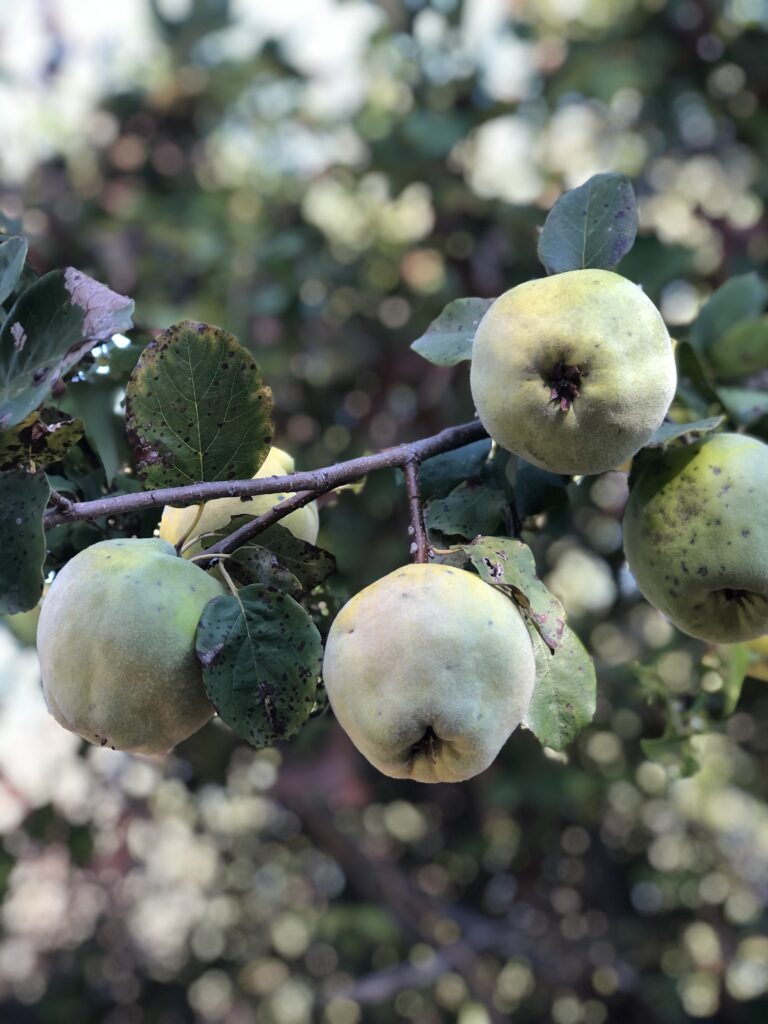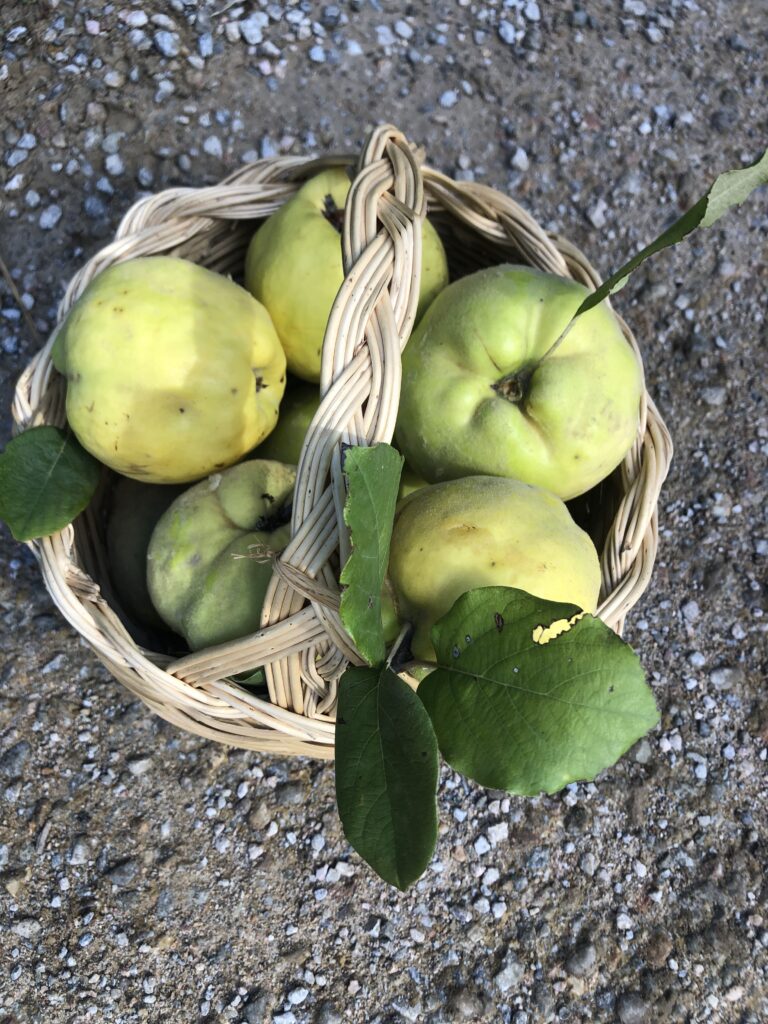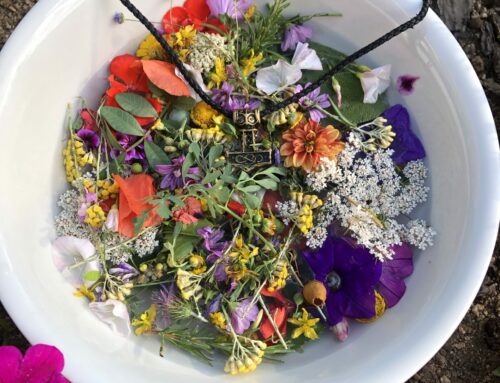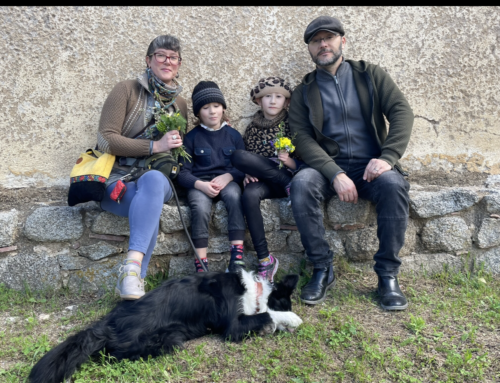
As the vibrant palette of fall begins to fade and the leaves yield to the crisp winds heralding winter, the quieter yet equally enchanting phase of late autumn reveals itself with some lesser-known wild fruits.
Late Autumn might seem bereft of the abundant harvests that characterize the earlier months, but look closer, and you’ll discover a hidden bounty. Although these fruits are lesser-known, they have ancient ties deeply ingrained with history and folklore. Many of them also offer the gifts of transformation and patience through the process to render them edible. Their exposure to either heat or ice makes them palatable for human tastes.
In this season of transformation, Quinces, Medlar, and Wild Pears take their places amidst the falling leaves. While Corbezzolo and Sloes, with their ties to ancient customs, complete this portrait of late autumn’s overlooked treasures.
Through the years, I’ve learned to forage these gifts of nature, connecting directly with the land through micro-foraging in my adopted home, the mythical island of Sardinia. It’s this connection that I wish to share with you—unveiling not only the inherent magic of these fruits but also the personal enchantment I’ve found in discovering and preparing them.
Join me through a new three-part series as we savor the magic of late autumn’s fruits, each with a narrative to tell and a flavor to be cherished, as they carry on their legacy from the past into our kitchens and our hearts.

The Quince: A Fruit of Antiquity
Quince, one of the oldest known fruits, has a rich heritage, most well-known in Greek mythology. Revered as a symbol of love and beauty and associated with Aphrodite, the goddess of love, the quince was everpresent in ancient wedding rituals, symbolizing the sweet journey of union between two souls.
Quinces may even hold the title of the fabled Golden Apples of Norse mythology, associated with beauty, health, and longevity—like an ancient superfruit.
In the Norse legends, the Golden Apples of Asgard were not just fruits but symbols of eternal youth and vigor for the Gods. These magical apples grew in a golden orchard within Asgard, the realm of the Aesir, and were tended by the Goddess Idunna. It was believed that the Gods’ continued vitality and youth depended on consuming these mystical apples.
With its golden hue, the quince has often been considered a likely candidate for these mythical apples, especially given that the Old Norse word ‘epli‘—commonly translating to ‘apple’—was once a term used to describe any fruit or nut. Since apples as we know them were not known in Scandinavia until the late Middle Ages, the true identity of the Golden Apples is subject to interpretation. The quince, therefore, with its ancient lineage and cultivation, fits seamlessly into this narrative.
Golden Apples are not unique to Norse mythology; they appear in various cultures and are often ascribed with enchanting properties. Whether as a prize sought by unworthy beings, often depicted as birds who coveted and stole the apples, or as a divine sustenance akin to the Ambrosia of the Greek gods, these fruits symbolize a treasure beyond mere nourishment—they are the embodiment of the divine and the magical.
While quinces might not grant eternal youth as in the legends, they are packed with nutrients and healthful properties that are beneficial for our well-being. They are rich in antioxidants, including vitamin C and phenolic compounds. These antioxidants help neutralize free radicals, potentially reducing the risk of chronic diseases and supporting overall health. At the same time, the fiber in quince is beneficial for heart health, as it helps to reduce high blood pressure and cholesterol levels.
Yet the quince isn’t just a feast for the heart; it is a spectacle for the senses. Their smell is intoxicating and triggers a mouthwatering effect. Typically too tart and astringent to be eaten raw, quince’s transformation upon cooking is nothing short of magical. When poached, the quince changes color, turning its white flesh golden or even becoming a deep, rosy pink and developing a complex floral, sweet-sour flavor that captivates the palate. This process is not just a culinary endeavor but a visual and sensory experience, as I’ve witnessed firsthand watching my children’s captivated expressions.
Thus, as we savor the quince, we are reminded not just of its physical transformation through cooking but also of its storied past. In each bite, there lies the whisper of myths that span from the halls of Asgard to the peaks of Olympus, a testament to the fruit’s legendary status as a keeper of vitality and beauty, a bridge between the mortal world and that of the gods.
Related Posts:
Micro-Foraging: A Journey of Heart, Land, and Spirit
The Golden Apples of Asgard
Thresholds to the Otherworld: Thorn & Hedge Magic
Rowan: The Sacred Witch Tree
Sardinia’s Ancient Olive Trees







Leave a Reply